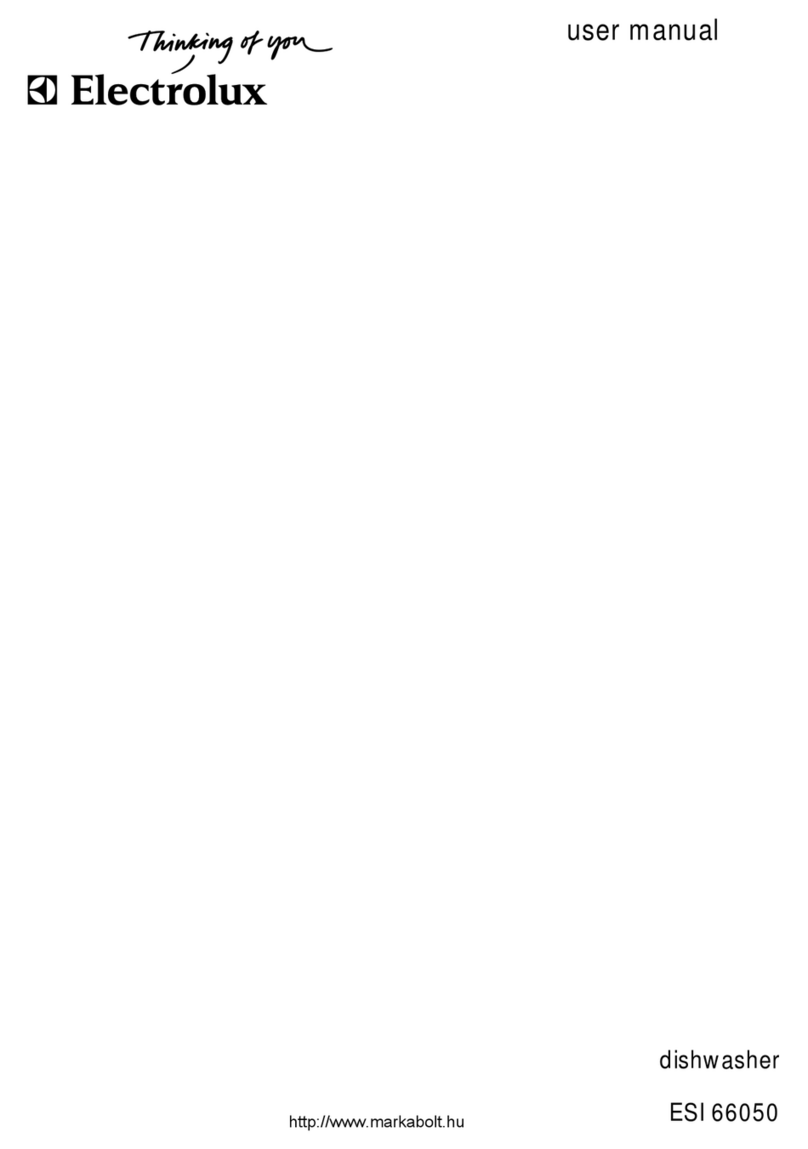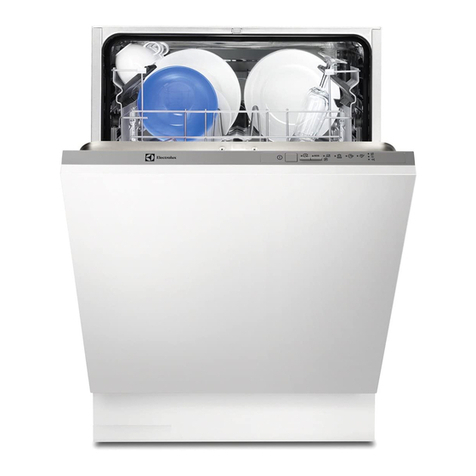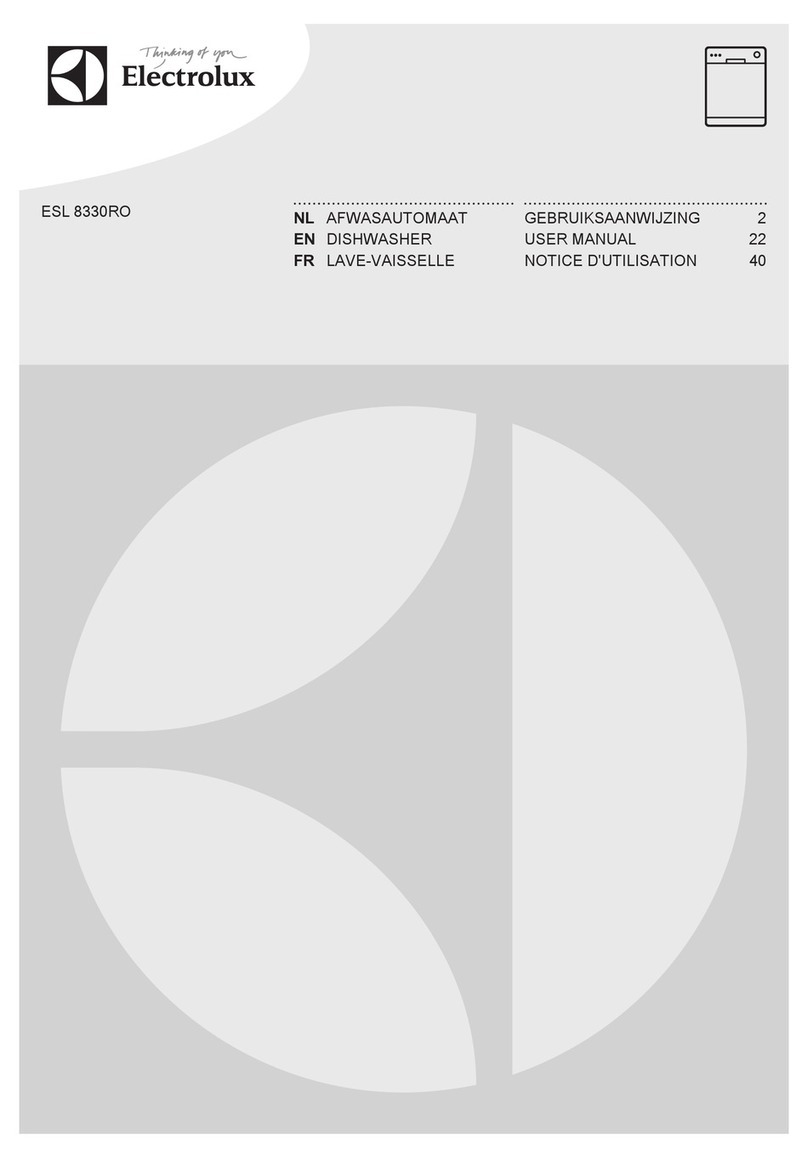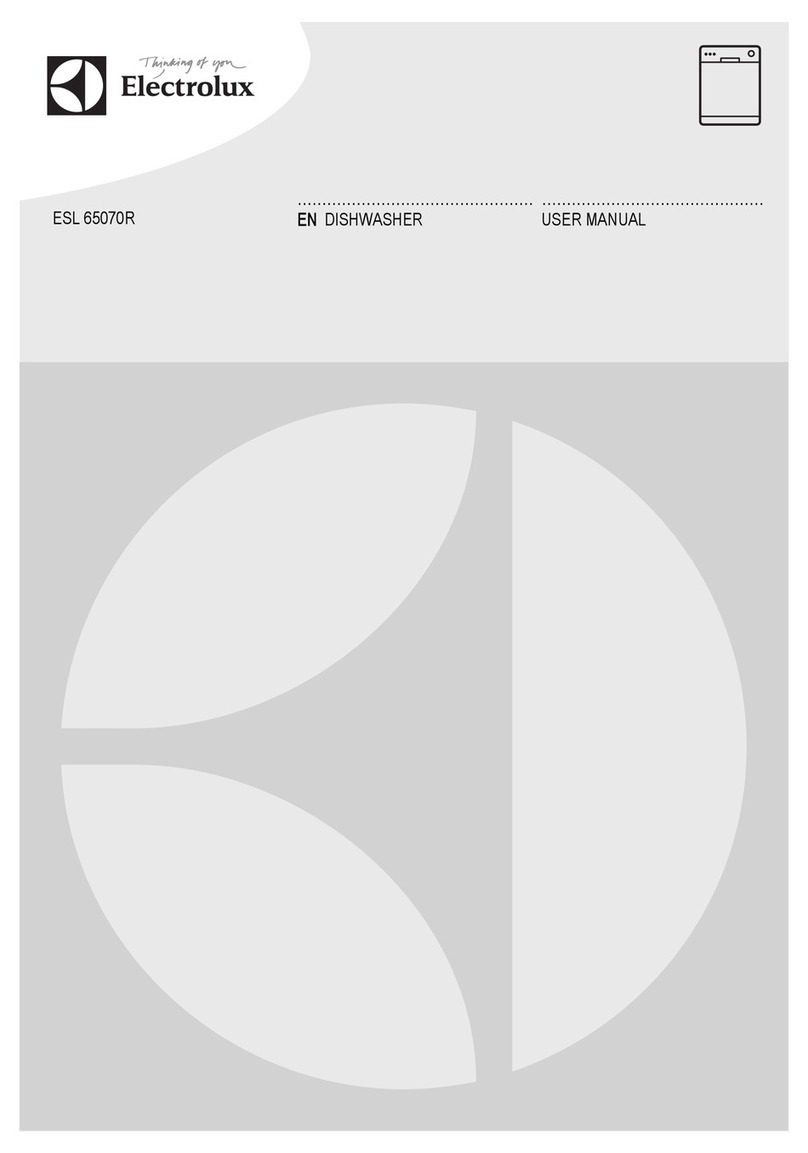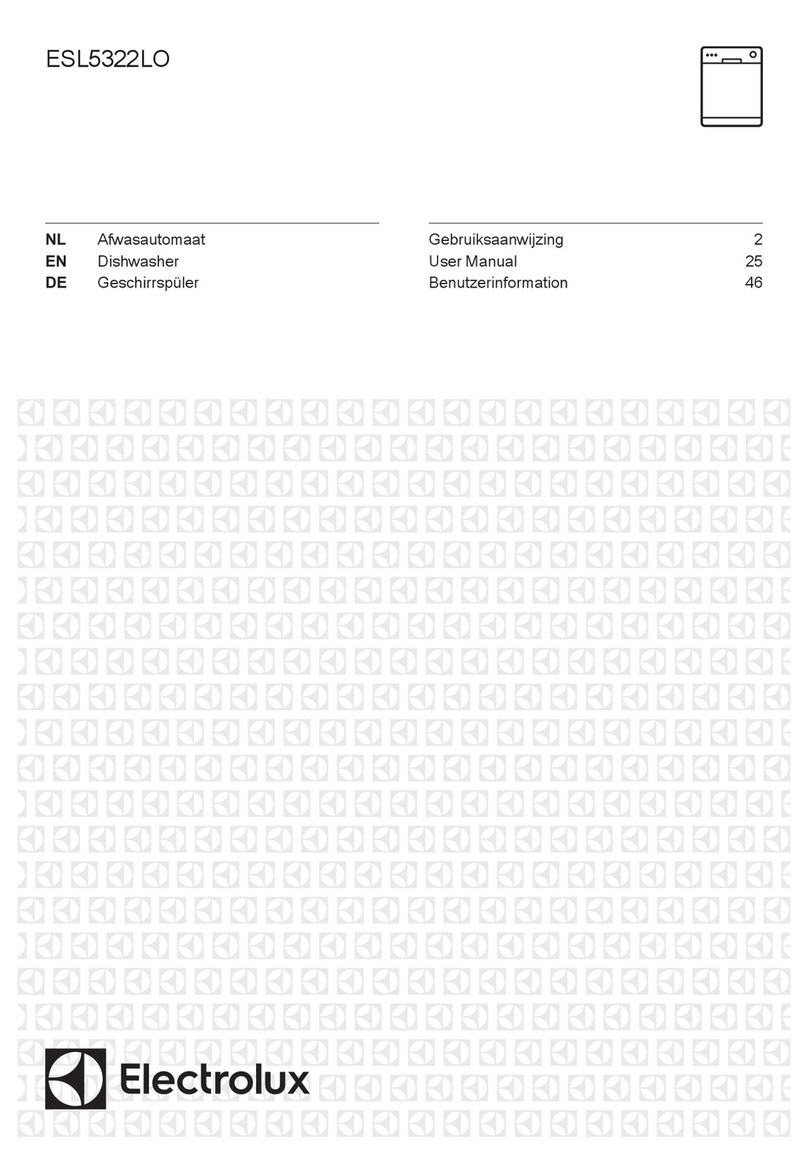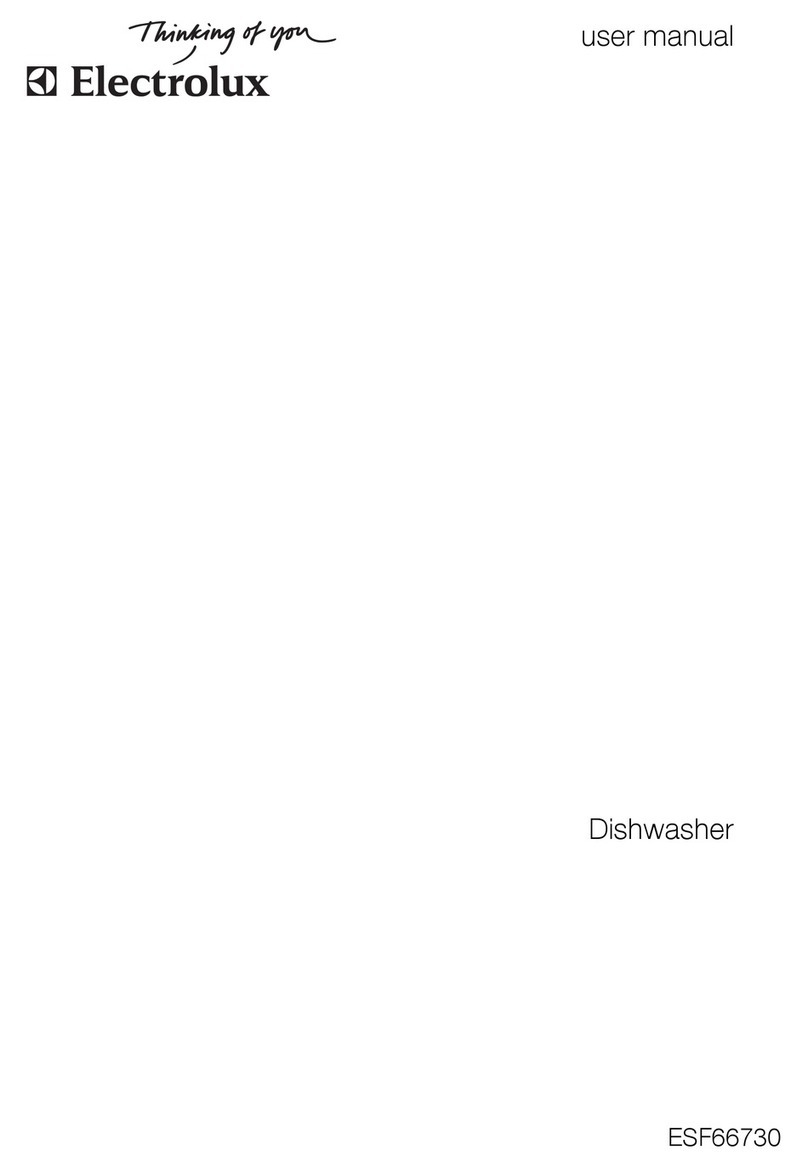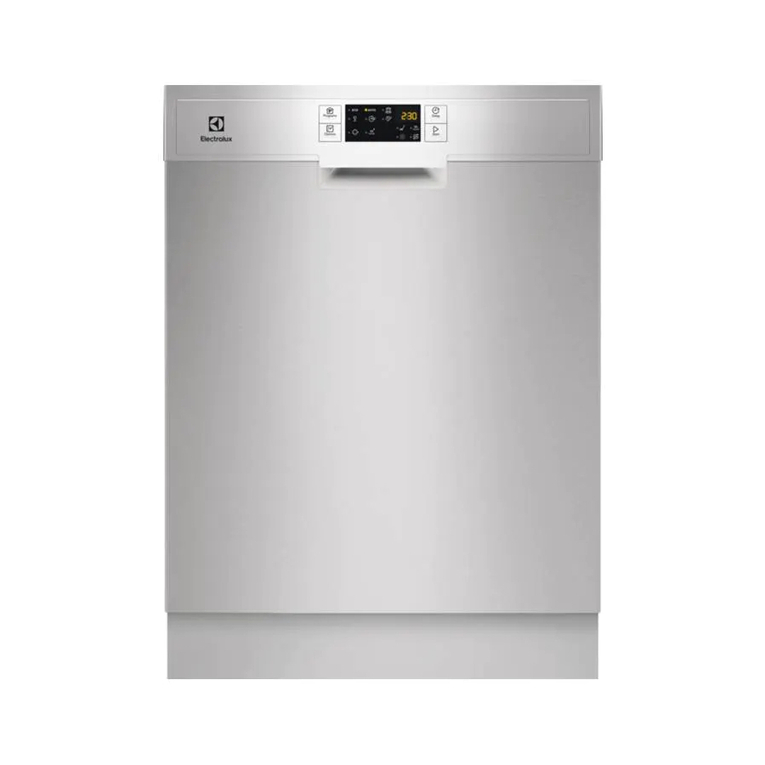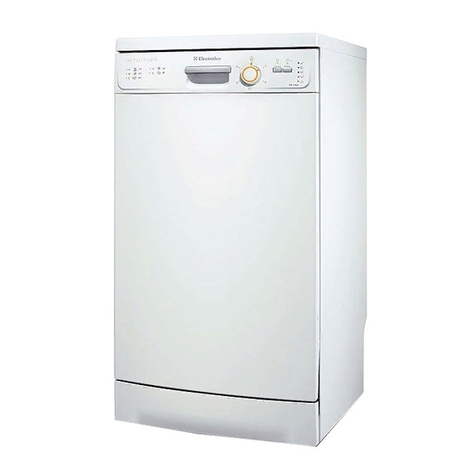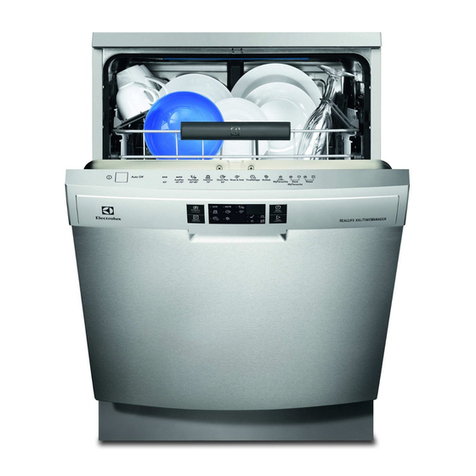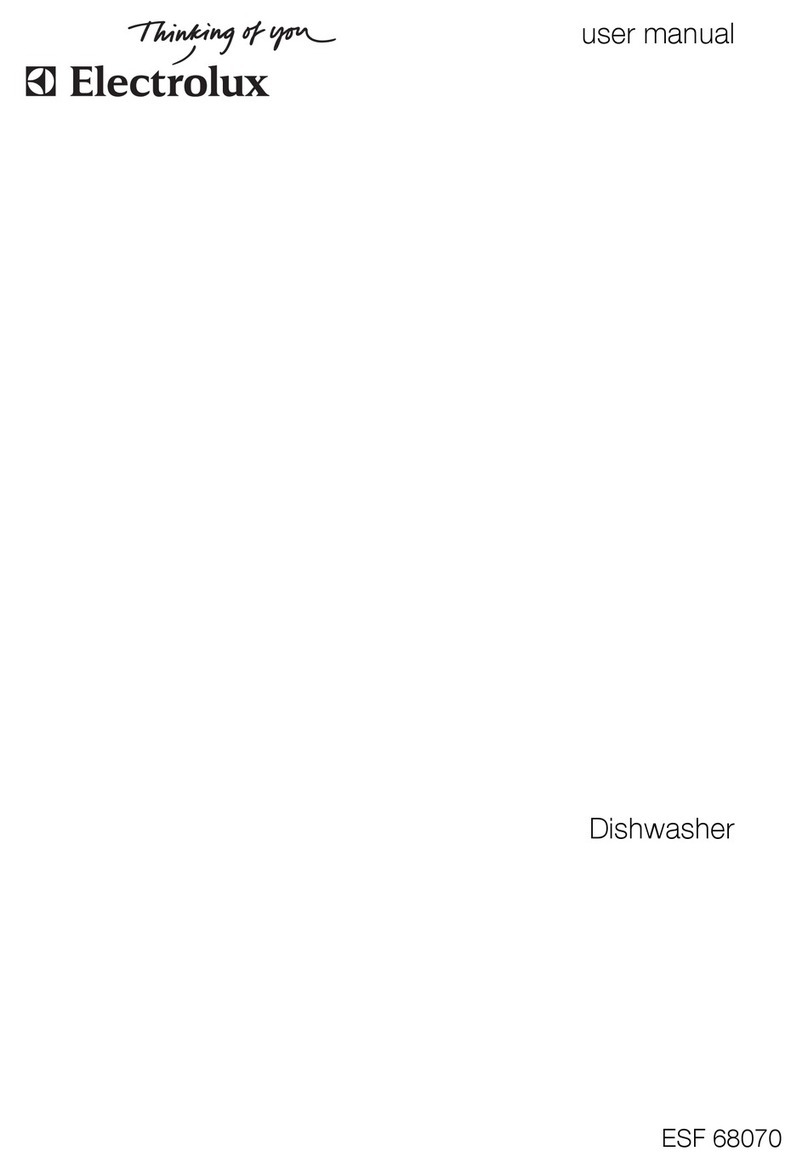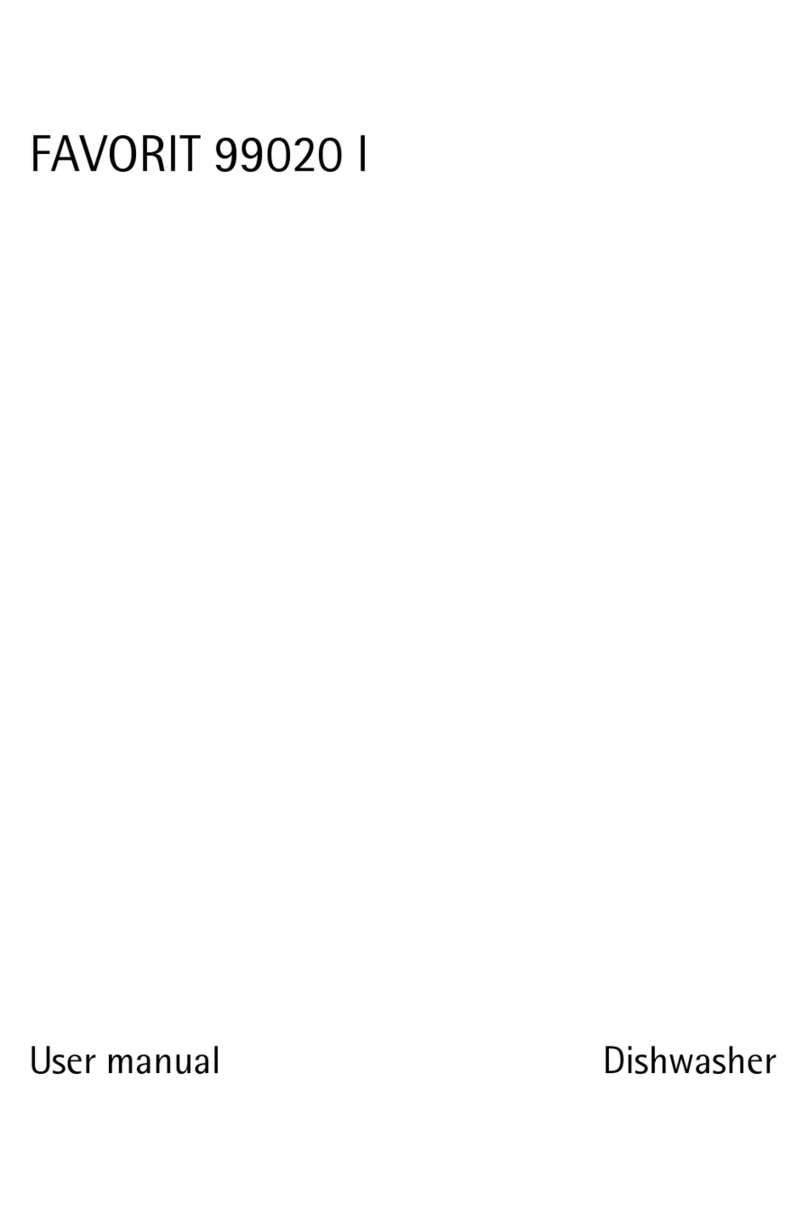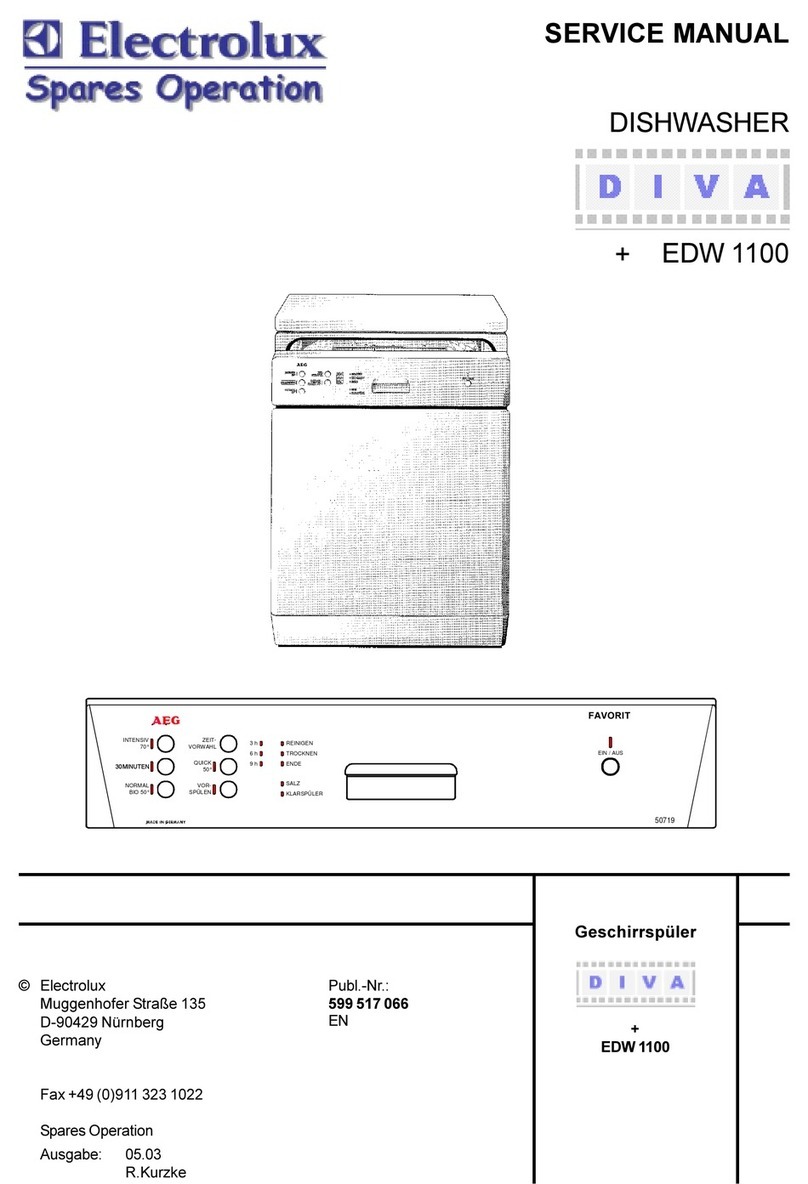
11
-if the detergent dispenser only oper-
ates during filling electrovalve operation for
restoring the boiler level; terminals 7-9 of the main
terminal board are powered at the same time.
-if
the rinse-aid dispenser only oper-
ates during filling electrovalve operation for
restoring the boiler level; terminals 8-9 of the main
terminal board are powered at the same time.
-if
the rinse-aid dispenser only oper-
ates during wash pump operation; terminals 8-9 of
the main terminal board are powered at the same
time.
For connections, see the wiring diagram.
Example:
Supposing that an external detergent dispenser has
been connected with a tank concentration measuring
sensor, a standard setting could be as follows:
the dispenser is not activated during filling of
the tank.
the dispenser is activated during wash
pump operation and, thanks to the concentration
measured by the conduction sensor, the correct
amount of detergent is dispensed.
2) Rinse-aid diaphragm dispenser
To change the dispensed amount, turn on screw
“D” accordingly (Fig. 12).
Suggestion: to check the effectiveness of the rinse-
aid, look at freshly washed glasses against the light.
Drops of water remaining on the glass indicate an
insufficient amount while streaks indicate an excess.
Changing the detergent/rinse-aid type
If changing to a different detergent/rinse-aid type
(even one by the same manufacturer), you must rinse
the suction and pressure hoses with fresh water before
connecting the new detergent/rinse-aid container. Oth-
erwise, the mixing of different types of detergent/rinse-
aid will cause crystallisation, which may result in a
breakdown of the dosing pump. Failure to observe this
condition will invalidate the guarantee and product lia-
bility.
B6 MAINTENANCE
• Descale the boiler, the internal surfaces of the tank
and the appliance water piping once or twice a
year.
• Descale the rinse and wash jets every month using
vinegar or a descaling agent.
• The internal hose of the rinse-aid and detergent
peristaltic dispenser should undergo periodic main-
tenance (once or twice a year).
Prolonged period of inactivity
If the dishwasher is not to be used for a long time, pro-
ceed as follows:
• Close the water supply cock.
• Completely drain the tank.
• Remove and carefully clean the filters.
• Completely drain the incorporated dispenser
hoses, removing them from the containers. Repeat
the procedure described in the paragraph “Manual
activation” at least 3 times.
• Completely drain the boiler by simultaneously
pressing the buttons as shown in the figure.
A buzzer indicates completion of drainage.
• Spread a thin film of Vaseline oil over all the stain-
less steel surfaces.
Preventive maintenance
The preventive maintenance call may be activated
(see service manuals).
Upon reaching the set number of cycles (e.g. 20000),
appears on the display.
This message advises calling a qualified technician for
a general check-up of the state of the appliance.
